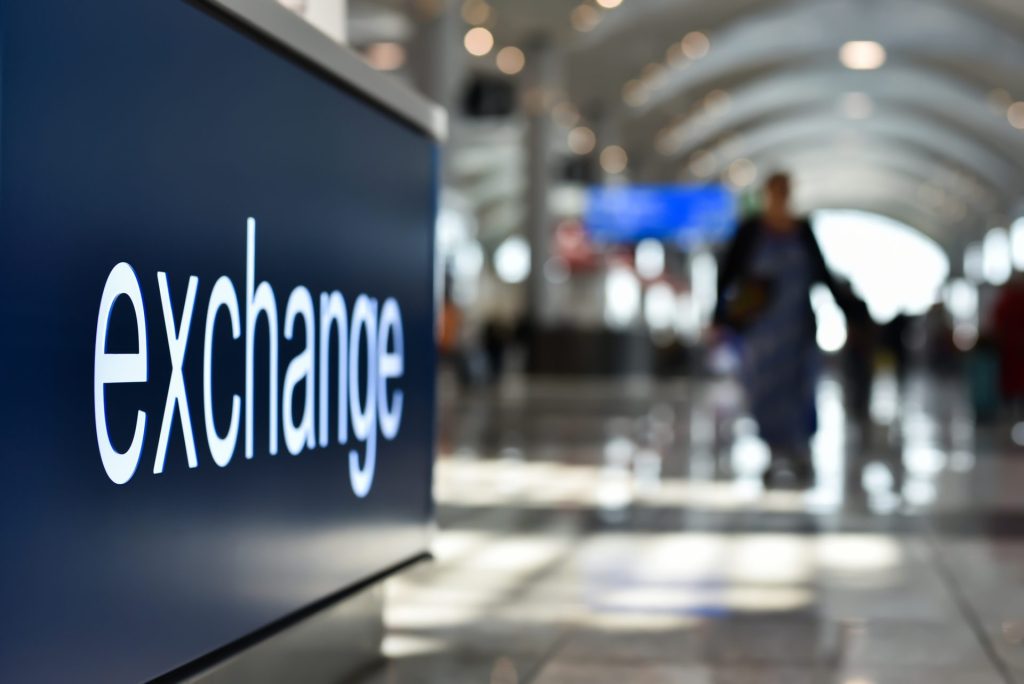Your trip is booked, your bags are almost packed, and you’re already thinking about the souvenirs you want to bring home. Now is the time to look up exchange rates and plan how much money you’ll need for your trip.
From trying new cuisines to exploring the shopping of a new country, bringing the correct currency is vital to remember when planning a trip. But exchange rates can be confusing. So, whether you think you are a currency exchange expert or have questions about the process, CAA has all the answers.
Think you know it all? Here are five misconceptions about currency exchange explained.
Misconception: You can predict when the value of a currency will be lower.
Many travellers think that currency exchange prices are bound to go up during particular times of the year. However, travel and gas prices fluctuate seasonally, so it is easy to think that currency exchange rates would too.
Why wouldn’t the currency exchange offices increase their fees for better profits when tourism is high? The truth is it’s challenging to predict the value of a currency, as it often adjusts to multiple factors like worldwide debts, economic powers, and trading. Such as, the global market decides the value of a currency and its exact cost. Then, financial institutions set their rate, which changes multiple times throughout the day.
Misconception: You lose money when exchanging it.
When exchanging currency, it is essential to remember that you are not simply buying cash. Instead, you are paying for the service of having your money exchanged.
It is easy to forget that exchanging currency follows the same principles as buying any other good or service. Plus, exchange offices do not get cash at its exact market value; they must sell it above its market value to stay in operation.
The location or reputation of the exchange company can change exchange costs. For example, the airport is one of the most convenient places to exchange currency. However, its convenience comes at a price. For more cost-effective currency exchange options, check your local mall, or visit the nearest International Currency Exchange (ICE) currency exchange office.
Pro tip: Did you know that with ICE, you can pre-order currency online and get their best rates with no fees?
Misconception: Your credit card will give you a better currency exchange rate.
Most major credit card companies offer fantastic loyalty programs that reward you for making purchases. But that isn’t the case for currency exchange. When you are “buying” a currency, your transaction is more like a cash withdrawal or advance rather than a purchase. As a result, in addition to fees from your credit card company, interest is charged on your card from the moment you do a transaction until you reimburse it whole. Plus, you cannot earn loyalty points or rewards on cash advances.
If you are in another country and process a transaction with your credit card, your bank’s exchange rate will be applied, along with any standard fees. The more transactions you do, the higher the conversion fees. So, save yourself unnecessary expenses by buying currency ahead of time and leaving your credit card for emergencies.
Misconception: The online exchange rate is what you receive from a financial institution.
We use Google every day, especially while planning a trip. You’ve probably already checked the currency of the country you’re visiting and the currency exchange rate.
Did you know the rate differs from what you will pay at a currency exchange office? The difference in the rate is because the foreign market constantly fluctuates, and there are service fees for exchanging your cash from one type to another.
Most financial institutions change their rates in the morning to reflect the currency value at the beginning of the day. The currency value you see on websites such as Google, or Xe Currency, is the actual purchase power of the currency when you check the web. Currency exchange offices apply a margin to make a profit to keep operating.
Misconception: The "pricier" the currency, the pricier what you can buy.
Currency rates can be read in two ways: in the foreign currency or home currency value. For example, we can read 1.30 CAD for 1 USD in a Canadian bank, but we can also notice 0.70 USD for 1 CAD in American institutions. But both rates are the same.
Many people think exchanging 1.30 Canadian dollars for 1 American dollar means losing 30 cents for every dollar bought. But usually, American prices are lower than Canadian.
A popular video game console in Canada will cost 599.99 CAD, while the same video game console in the USA is 499.99 USD. The $100 difference in prices accounts for the exchange rate, market fluctuation and the margins of financial institutions.
Exchange currency for your vacation
If you’re preparing for a trip and need to exchange currency, visit International Currency Exchange. You can make a reservation to pick up your money from any location in Canada. CAA Members enjoy a premium rate and no fee for online reservations. You’ll save the $9.95 fee at the airport or the $4.95 fee for city exchanges. Learn more about this new CAA Rewards® partner online.

